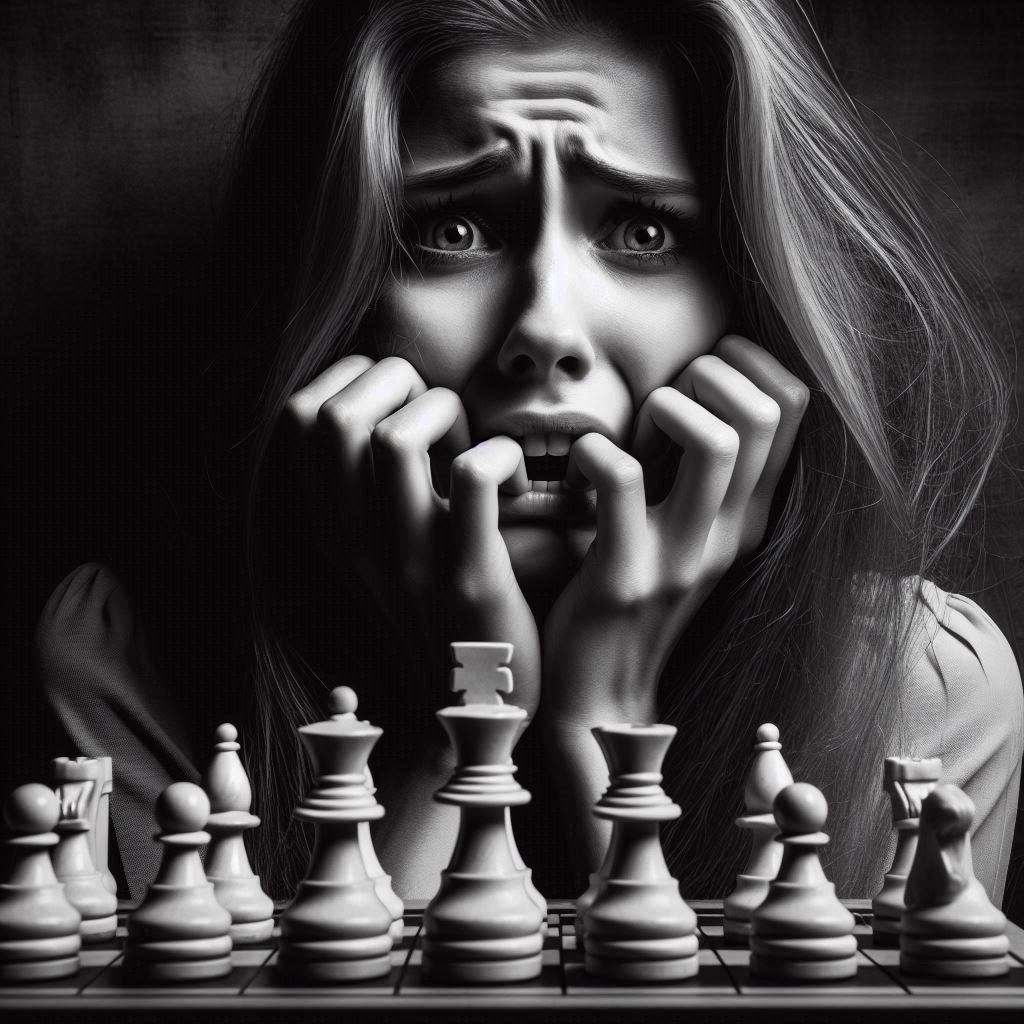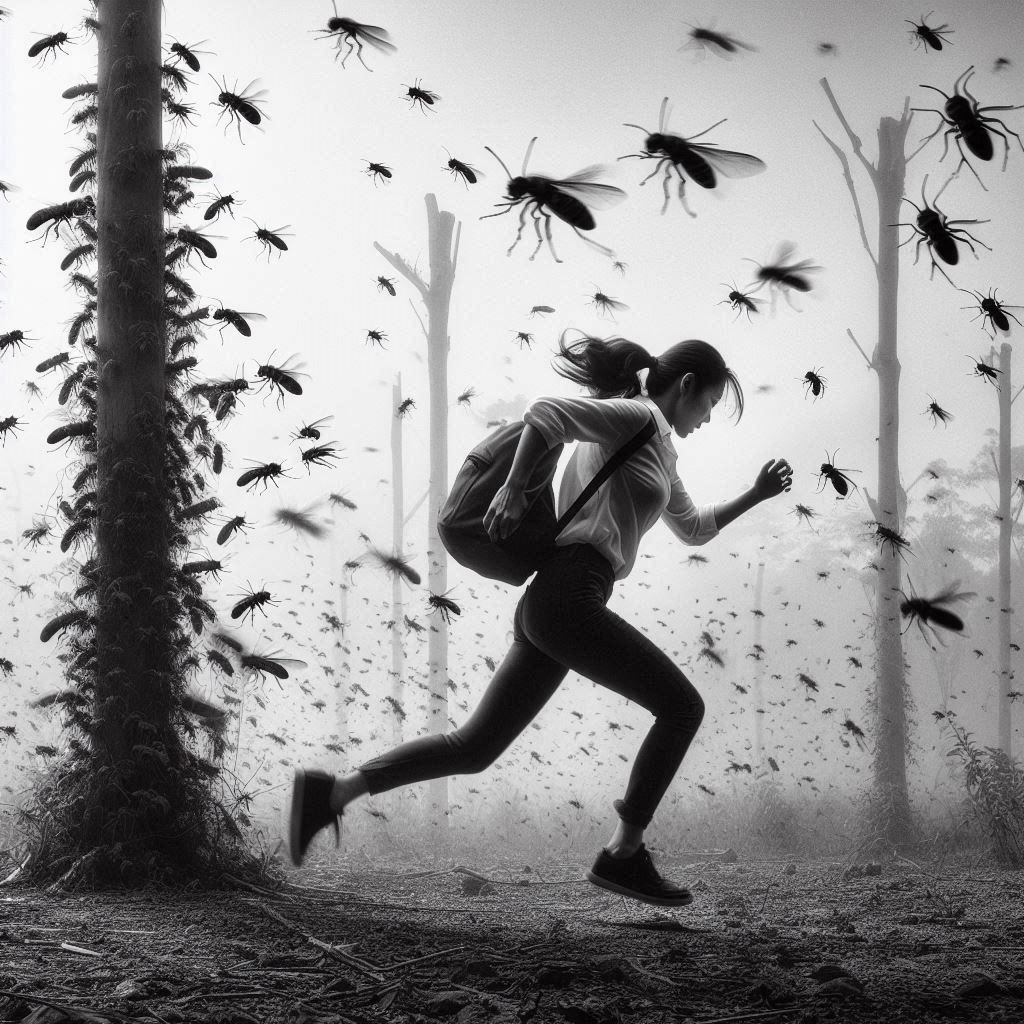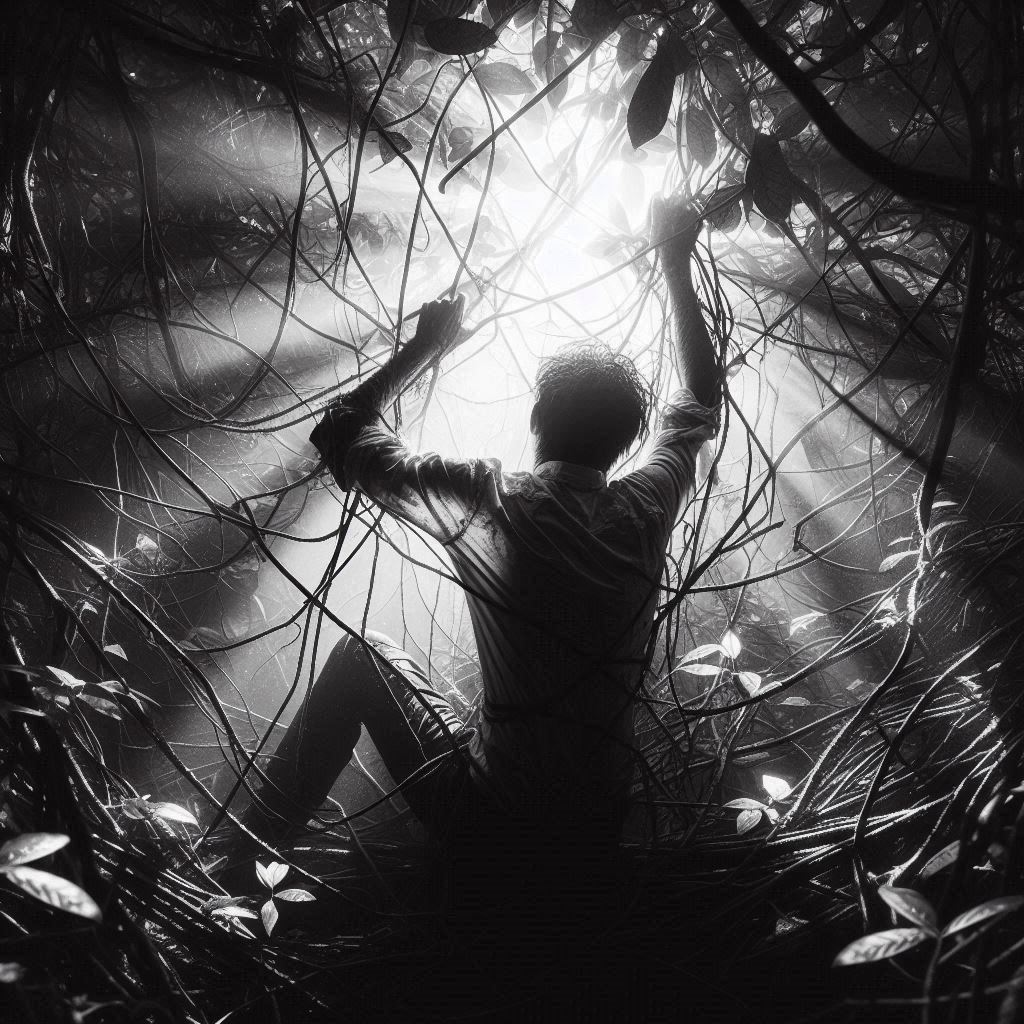Ever wondered why the number 13 sends chills down so many spines? Welcome to the intriguing world of triskaidekaphobia, the fear of the number 13. It’s not just some quirky superstition; it’s an ingrained psychological phenomenon affecting millions.
This fear takes root in both culture and history. From ancient beliefs to modern-day anxieties, the unease around 13 appears persistent and baffling. Hotels skip the 13th floor. Airlines avoid row 13. Even your average Friday the 13th feels a bit spookier than the usual.
Why is this particular number so ominous? What does science say about this irrational fear? By exploring triskaidekaphobia’s impact, we’ll unravel its significance in our collective psyche and how it shapes everyday decisions. Dive in and discover why one simple digit has such a profound hold on us.
Definition of Triskaidekaphobia
Have you ever felt uneasy about the number 13? You’re not alone. The fear of this number has a name—triskaidekaphobia. Let’s dive into what this term means and where it comes from.
What is Triskaidekaphobia?
Triskaidekaphobia is an intense fear or superstition about the number 13. People with this phobia might avoid anything related to the number. For instance, they may skip the 13th floor in hotels or the 13th row in airplanes. It’s not just a quirk; it can be a real, deep-seated fear.
Breaking Down the Word
The term “triskaidekaphobia” sounds complex, but it actually breaks down into simpler parts:
- Tris means three.
- Kai means and.
- Deka means ten.
- Phobos means fear.
So, put together, triskaidekaphobia literally means three and ten fear—or just fear of the number 13.
Why Fear the Number 13?
You might wonder, why 13? Why not some other number?
Humans like patterns and predictability. The number 12 is seen as complete and harmonious. Think about it: we have 12 months in a year, 12 zodiac signs, 12 hours on a clock. But 13? It breaks that mold. It feels off-balance.
Some historical and cultural beliefs also play into this fear. For example:
- Religion: In Christianity, Judas Iscariot, who betrayed Jesus, was the 13th guest at the Last Supper.
- Norse Mythology: Loki, the trickster god, was the 13th guest in a tale that led to chaos.
Everyday Impact
The fear is so widespread it even shapes some of our everyday choices:
- Buildings: Many skip labeling the 13th floor.
- Airlines: Some avoid a 13th row of seats.
- Events: Weddings or major events might avoid the 13th of any month, especially if it’s a Friday.
How Common Is It?
You might be surprised to learn how common triskaidekaphobia is. It’s not just a quirky phobia; it has real-world implications. Engineers, architects, and event planners often skip the number 13 to make people comfortable.
Isn’t it fascinating how a simple number can stir up so much emotion and action?
Historical Perspectives
Triskaidekaphobia, the fear of the number 13, has a rich and fascinating history. From ancient customs to modern superstitions, the number 13 has always stood out. In many cultures, it’s been viewed with suspicion and often associated with bad luck. But why is 13 seen this way? Let’s dive into some of those cultural references.
Cultural References: Examine how different cultures perceive the number 13 and its association with bad luck
Across the globe, people have different views on the number 13. It’s astounding how a single number can carry so many meanings.
Western Cultures
In the West, 13 often gets a bad rap. Ever wondered why? Here’s a quick look:
- Christianity: At the Last Supper, there were 13 people—Jesus and his 12 disciples. Judas, the one who betrayed Jesus, was the 13th person to sit at the table.
- Friday the 13th: Many believe this day brings bad luck. Some buildings skip the 13th floor entirely—jumping from 12 to 14 in the elevator buttons.
Eastern Cultures
However, the story changes as we shift our focus to the East:
- China: The number 13 isn’t considered all that unlucky. In fact, it’s the number 4 that’s feared due to its pronunciation, which is similar to the word for “death.”
- India: Here, 13 can be seen as a good omen. Some even regard it as a sign of prosperity and fame.
Ancient Civilizations
The fear of 13 isn’t just a modern phenomenon. Ancient civilizations had their views too:
- Babylonians: They had a lunar calendar and considered the 13th month unlucky. It didn’t fit well into their system of counting.
- Norse Mythology: Legend tells of a dinner party in Valhalla. Loki, the trickster god, was the 13th guest, leading to chaos and destruction.
Miscellaneous References
Different cultures have their unique takes:
- In Italy, Friday the 17th is the unlucky day, not the 13th.
- The Mayans: They loved the number 13 considering it sacred and a symbol of time cycles in their calendar.
In short, how a culture perceives the number 13 can vary greatly. Whether seen as unlucky, neutral, or even lucky, the number 13 has left its mark worldwide.
Understanding these cultural differences helps us see how a simple number can influence beliefs and practices in so many ways. If nothing else, it makes us think twice the next time we encounter the infamous number.
Psychological Underpinnings
Triskaidekaphobia: a word that’s hard to spell and even harder to live with. Imagine feeling an intense, irrational fear every time you see or think about the number 13. Where does this fear come from, and how does it affect those who have it? Let’s dive into these psychological aspects.
Fear vs. Phobia: Differentiate Between a Common Fear of the Number 13 and a Clinical Phobia
We all have things we are scared of. For some, it’s spiders; for others, it might be heights or enclosed spaces. A lot of people feel uneasy about the number 13. Maybe it started with hearing spooky stories or bad luck happenings attached to this number. But when does this discomfort turn into a real phobia?
A fear is often a strong dislike or anxiety about something. It’s generally manageable and doesn’t interfere much with daily life. We all have fears, and they’re a part of being human.
On the other hand, a phobia is something more intense. It’s a severe, often debilitating, fear that disrupts everyday activities. It can cause physical symptoms like sweating, shaking, or even full-blown panic attacks. Triskaidekaphobia, the fear of the number 13, isn’t just being spooked by Friday the 13th; it’s feeling sheer terror and maybe even avoiding anything related to that number.
To put it simply:
- A fear can be shrugged off with a bit of effort.
- A phobia dominates your thoughts and actions.
Understanding this difference can help us comprehend why triskaidekaphobia is more than just a quirky superstition.
Feeling afraid now and then is normal, but living in constant fear of a number isn’t. Phobias like triskaidekaphobia are serious and can affect mental health and quality of life. So, while many might laugh off their discomfort with 13, those with triskaidekaphobia find nothing funny about it.
Impact on Daily Life
Triskaidekaphobia, the fear of the number 13, can have a profound impact on a person’s daily life. This fear may seem irrational to some, but for those who experience it, the effects are very real and far-reaching. From day-to-day routines to social interactions, let’s explore how this phobia shapes daily living.
Social Consequences
The social implications of triskaidekaphobia can be significant. People with this fear might go out of their way to avoid all things associated with the number 13. Imagine dodging dinner plans with friends because the restaurant is located on 13th Street. Or, skipping family gatherings because they’re scheduled on the 13th of the month.
This avoidance behavior can lead to:
- Strained Relationships: Friends and family might not understand why you’re always avoiding certain situations. This can create a gap between you and your loved ones.
- Missed Opportunities: Turning down social invitations or avoiding events can result in lost chances to connect with people and build meaningful relationships.
- Social Isolation: Gradually, the fear can make you feel more isolated, as the scope of places and events deemed “safe” shrinks.
It’s important to acknowledge these effects because they can accumulate over time, affecting the quality of one’s social life. Interpersonal relationships are like gardens—they need regular tending to flourish. When triskaidekaphobia dictates your social calendar, those gardens can wither from neglect.
In conclusion, triskaidekaphobia’s impact on daily life touches numerous aspects, but it distinctly leaves a mark on socio-interpersonal dynamics. For many, this fear isn’t just a quirky superstition—it’s a barrier to connecting with others and engaging fully in life’s rich tapestry.
Treatment Options for Triskaidekaphobia
If the fear of the number 13 is affecting your life, you don’t have to face it alone. There are several effective methods to tackle triskaidekaphobia. Let’s dive into two popular therapy options: Cognitive Behavioral Therapy and Exposure Therapy.
Cognitive Behavioral Therapy
Cognitive Behavioral Therapy (CBT) is a powerful tool to help manage and overcome triskaidekaphobia. It’s based on the idea that our thoughts, feelings, and behaviors are interconnected. By changing how we think, we can change how we feel and behave.
- Identify Negative Thoughts: The first step is to recognize and challenge the irrational thoughts associated with the number 13. For example, you might think that the number 13 is inherently bad or brings bad luck.
- Change Thought Patterns: Once you identify these thoughts, a therapist will help you replace them with more realistic and positive ones. Instead of viewing the number 13 as unlucky, you might start seeing it as just another number.
- Behavioral Changes: Finally, CBT involves taking actions that reinforce these new, healthier thought patterns. You might practice being around the number 13 in safe, controlled ways to lessen your fear over time.
Exposure Therapy
Exposure Therapy is another effective technique for triskaidekaphobia. This method gradually exposes you to the source of your fear in a controlled setting, helping you build tolerance.
- Gradual Exposure: Start small. Look at pictures of the number 13 or write it down. As you get more comfortable, expose yourself to the number in larger and more personal ways, like staying on the 13th floor of a building.
- Steady Progress: Increase exposure slowly and steadily. Don’t rush. The goal is to reduce fear incrementally, making each step a bit more challenging until the number 13 no longer feels threatening.
- Coping Mechanisms: Learn and practice coping strategies like deep breathing, mindfulness, or visualization to manage anxiety during exposure sessions.
Both CBT and Exposure Therapy can significantly reduce triskaidekaphobia’s grip on your life. With the right support and techniques, you can overcome this fear and feel more in control.
Famous Cases and Anecdotes
Is the number 13 really unlucky, or is it all just in our heads? Let’s look at some real-life stories that show how triskaidekaphobia has influenced people and events.
Franklin D. Roosevelt’s Fear
Did you know that Franklin D. Roosevelt refused to travel on the 13th day of any month? Yes, one of the greatest leaders of the 20th century had a fear of the number 13. He also avoided having dinner with 13 guests at the table. If he had exactly 13 guests, he would invite his secretary to join them and make it 14. It seems even influential people aren’t immune to this fear.
Apollo 13
Apollo 13 might just be the most famous example of triskaidekaphobia in action. The crew faced serious issues during their mission to the moon. The mission, which launched at 13:13 CST on April 11 and had an oxygen tank explode on April 13, was a real-life nightmare for the astronauts on board. Though they miraculously made it back to Earth safely, the mission showed how superstitions can connect oddly to real-world events.
Mark Twain’s Dinner
The legendary writer Mark Twain had his own brush with triskaidekaphobia. Once, Twain was invited to a dinner party, and upon arrival, he found there were 13 people seated at the table. Twain reportedly said, “It was bad luck. They only had food for 12.” It’s a humorous take, but it underscores how the unease surrounding the number 13 can creep into our lives in subtle ways.
The Thirteen Club
In the late 19th century, a group of New Yorkers formed The Thirteen Club to debunk the superstition. The members would deliberately gather in groups of 13 for dinner on the 13th day of the month. They would walk under ladders, spill salt, and perform other “unlucky” acts. Despite their best efforts, the number of people who truly believe 13 is unlucky has not waned. The club boasted members like future presidents Chester Arthur and Theodore Roosevelt, signaling some support against the superstition from prominent figures.
Alfred Hitchcock
Even the Master of Suspense, Alfred Hitchcock, wasn’t immune to triskaidekaphobia. Born on August 13, Hitchcock often played with the idea of superstitions in his films. Although he leaned into his fears for creative inspiration, he couldn’t shake the unease concerning his own birth date. Imagine directing classic horror films while being spooked by the date on your own birth certificate!
Debunking Myths
Triskaidekaphobia, or the fear of the number 13, has been a part of our culture for ages. It’s high time we set the record straight and debunk some common myths. Let’s break them down and see what’s real and what’s just made up.
Myth 1: Triskaidekaphobia Only Impacts Superstitious People
A lot of people think only those who are superstitious can fear the number 13. This simply isn’t true. People from all walks of life can find themselves feeling uneasy about this number. Sometimes, it’s due to how often the number 13 is tied to bad luck in movies or popular media. This kind of exposure can make anyone, even skeptics, feel a bit wary.
Myth 2: Buildings Have Thirteenth Floors
Despite what the movies show, many buildings skip the 13th floor entirely. Next time you’re in an elevator, check the floor buttons. You might notice it jumps from 12 to 14. It’s not just superstition; it’s smart business. Developers avoid labeling a floor as the 13th because they know some people won’t want to live or work there.
Myth 3: Bad Things Happen on the 13th of the Month
Ever noticed a slew of bad news stories happening on the 13th? Newsflash: bad things happen every day. The 13th isn’t cursed. Our brains just make connections that fit the stories we tell ourselves. Think about it. If something unlucky happens and it’s the 13th, we remember it because that fits our narrative. When good things happen, we brush them off.
Myth 4: Friday the 13th Is Inherently Unlucky
The fear of Friday the 13th has its own name – paraskevidekatriaphobia. But guess what? It’s just another day. The idea that it’s unlucky is rooted in layers of folklore and stories from various cultures. For most people, it’s just a regular Friday. We even have parents scheduling their c-sections to avoid the date, not because it’s truly unlucky, but out of generational hearsay.
Myth 5: Triskaidekaphobia Is Rare
You might think triskaidekaphobia is super rare, but it’s more common than you’d guess. Many people have a mild version of the fear without even realizing it. They might avoid using the number 13 in routine situations, just subconsciously steering clear because it feels unlucky.
Reality Check
People fear what they don’t understand, and numbers aren’t any different. The myths surrounding the number 13 have more to do with cultural narratives and less with actual bad luck. It’s important to face these myths with logic and reason, reminding ourselves that they are just that – myths. The more we talk about it, the less power we give these unfounded fears.
So, the next time someone tells you to avoid the 13th anything, remember these points. You might find yourself a bit more relaxed when you see that number pop up.
Conclusion
It’s clear that triskaidekaphobia, the fear of the number 13, can have a significant impact on people’s lives. From avoiding floors and rooms numbered 13 to foregoing the number in phone numbers and addresses, this fear permeates many aspects of daily existence.
Reflecting on Our Fears
In thinking about triskaidekaphobia, it’s important to reflect on the nature of fears and phobias in general. Why do seemingly innocuous things like numbers trigger such intense reactions in some people?
Phobias often arise from a mixture of cultural beliefs, personal experiences, and psychological predispositions. When it comes to the number 13, historical superstitions and stories have played a considerable role in cementing its unlucky reputation.
How Can Understanding Help?
By understanding the origins and impacts of our fears, we can better address them. Awareness and knowledge can lead to coping strategies that mitigate anxiety and fear. This not only applies to triskaidekaphobia but also to other common phobias, such as those involving spiders, heights, or public speaking.
Key Points to Remember
- Triskaidekaphobia is an extreme fear of the number 13.
- It can influence daily life and decisions.
- Cultural, historical, and psychological factors contribute to the fear.
Encouraging Reflection
Have you ever altered your behavior because of a superstition or fear? When was the last time you reexamined a long-held belief through the lens of logic and understanding? These are vital questions to ask ourselves, pushing us towards personal growth and a more rational perspective.
Understanding triskaidekaphobia and other phobias encourages us to shoebox our fears and not let them hinder our lives. Embracing this approach could lead to a more fearless and fulfilling existence.










